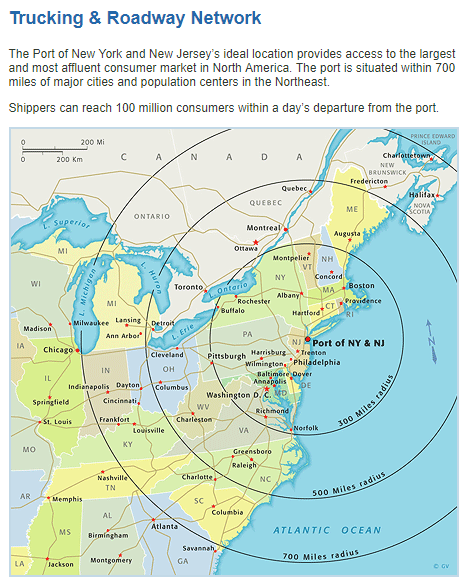Port of New York-New Jersey Truck Replacement Program
The Port Bans Old Truck Engines
It is safe to say that we are about to see delays at the Port of New York-New Jersey starting January 1, 2018 with a new prohibition of trucks with engines dating 1994 or 1995. According to Journal of Commerce, it will “ban about 200 of the drayage fleet of about 9,000 trucks that actively serve the port.” [Source] The prohibition is one way the port is striving to be environmentally-friendly with goals for less pollution in the near future.
In fact, grants exist for eligible truck owners to purchase newer vehicles via the “Truck Replacement Program.”

The below information was derived from the official website of The Port of New York-New Jersey:
Who Is Eligible
Independent owner operators or licensed motor carriers that own port drayage trucks with engine Model Years 1994-2003 that frequently serve the port, which is defined as at least 150 times in the last 12 months, and who agree to continue to service the port frequently with the replacement truck for five years. Replacement trucks must have engines that meet or exceed 2007 federal emission standards. The old truck must be scrapped.
How Does the Program Work?
Applicants may only apply for grant funding for a maximum of two replacement trucks. The Truck Replacement Program is funded by federal Congestion Mitigation and Air Quality Improvement (CMAQ) Program and Diesel Emission Reduction Program (DERA). It covers up to 50 percent of the cost of a replacement truck or a maximum of $25,000, whichever is less. Click here for examples of how to identify Engine Model Year. The application process may take from 45 to 60 days before one can receive their new truck. Applicants may only apply for grant funding for a maximum of two replacement trucks.
How Do I Get Started?
Click here to obtain an application
For assistance in filling out the grant application, please call us at 1-866-515-1716; or email us at panynj@tetratech.com.
Benefits
Qualified applicants receive multiple benefits by participating in the TRP. These benefits include:
- Newer Cleaner Vehicle
- Newer trucks are often equipped with cleaner, lower emitting engines.
- Continued Drayage Service at the Port
- To reduce diesel truck emissions as well as improve health and safety, the Port Authority implemented a plan to phase out older trucks serving its marine terminals.
- Beginning March 1, 2016, only Drayage Trucks that are equipped with an engine that meets or exceeds federal Environmental Protection Agency on-road emission standards for 2007 model year heavy-duty diesel-fueled engines shall be permitted to complete registration in the DTR via the PortTruckPass website.
- Beginning January 1, 2018, no Container Terminal Facility shall permit access into any Port Authority Terminal by any Drayage Truck equipped with an engine of model year 1995 or older. The TRP provides a mechanism for eligible participants to scrap and replace their trucks equipped with engine Model Years 1994-2000 with newer, cleaner models and continue drayage operations at the Port Authority’s marine terminals.
The initial truck replacement program was open to new applications from 2010 to 2013. As a result of this program, the Port Authority succeeded in disbursing all of the federal grant money to replace a total of 429 old, dirty trucks, which were scrapped and replaced with newer, cleaner trucks.
